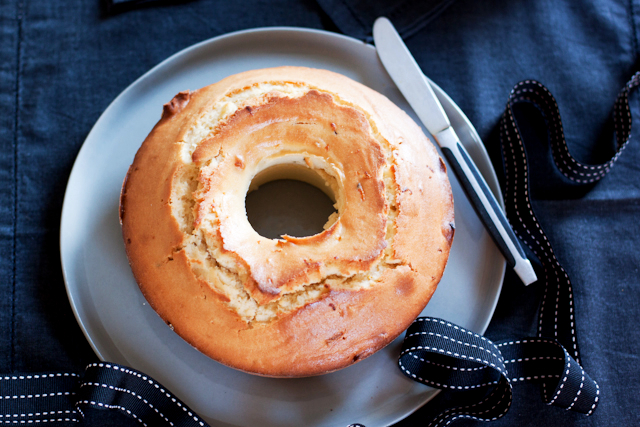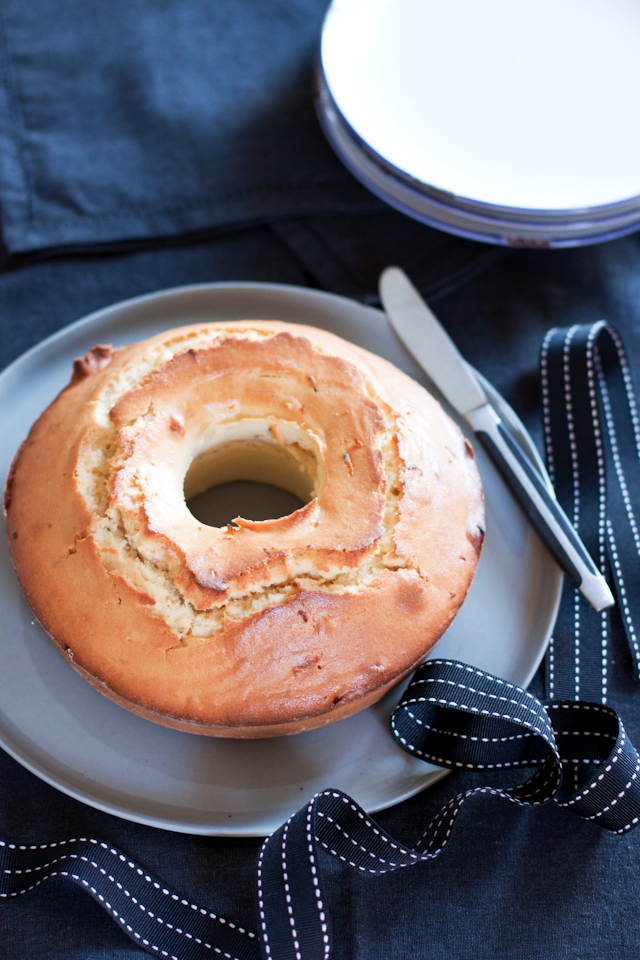For a celebration known as Fat Tuesday, you might think that the traditional recipes would be a chance for gluttons to gleefully stuff their faces with, well, fatty things. Mid-week, no less. Well it’s sort of true. Martedì Grasso (also known as Mardi Gras in French), or Fat Tuesday, which just happens to be tomorrow, February 12, is probably the most well known day of Carnevale, Carnival. It represents the end of that lavish, drunken, festive period of carnival and the beginning of the fasting period of Lent that leads up to Easter.

This month’s Italian Table Talk theme, Carnival, will take us to Florence where Giulia gathers the secrets of the perfect Schiacciata alla Fiorentina, then it’s to Venice for some fried pastry, where Jasmine shares a Jewish recipe for the holiday of Purim and Valeria takes us to her Venice for the best favette.
The tradition of Carnival is very ancient indeed, far older than its catholic rituals would have you think. While the Venetian Carnival, with its beautiful masks, balls and grand costumes, is perhaps most famous outside of Italy, Tuscany has the Carnival of Viareggio. It dates back to 1873 and today is popular with the little ones who get dressed up in costume to watch the famous paper mache floats parading through the streets of the coastal town.
But back to Martedì Grasso. The idea is that on Fat Tuesday, you need to stuff your faces with any of the forbidden foods that might be left in the house, foods that were considered “fatty” (though we’re talking religious points lost, not dietary points, if you are to succumb), such as meat, dairy and eggs, hence the reason why they say the word carnevale comes from carne (meat) levare (to remove).
But rather than, say, cream filled puff pastries or a decadently dense chocolate cake – things I’d say were appropriately “fat” – the traditional sweets of carnival are relatively pared back and simple. They are things that reflect a certain sparsity and poverty of the peasant countryside of times past. Perhaps one of the more decadent carnival treats is the southern Sanguinaccio Dolce – pig’s blood and chocolate, cooked into a thick pudding. In Tuscany you find things like cenci (also known as chiacchere in other parts of Italy – deep fried strips of dough coated in icing sugar), frittelle di riso (fried rice balls, also coated in sugar) or this humble cake with an unusual name, Berlingozzo.

The recipe for Berlingozzo does indeed call for forbidden ingredients such as eggs, butter and a bit of milk to loosen the mixture, but it’s not a fancy cake or even a pretty one at that. It’s a humble, plain cake, quite dense like a pound cake but a little drier and baked in the form of a ring. This cake, they say, goes back to the time of Cosimo de Medici. It’s unusual name comes from a Tuscan word with German origins, berlingaccio, which means Fat Thursday. The Tuscans even have a verb, berlingare, which roughly means to have fun at the table – which is precisely what is called for during carnival time.
Traditionally scented with aniseed (or often, lemon or orange rind), the aroma of this cake as it’s baking will remind any Tuscan of that fair ground favourite, brigidini – thin, aniseed-flavoured wafers cooked on special cast iron forms that are a must at any sagra, fair and many a market and that come from the same Tuscan town as the Berlingozzo, Lamporecchio, near Pistoia. What is it with this town and aniseed-flavoured sweets, I’m just not sure, but they are its claim to fame. Even Artusi, in 1891, writes that you find brigidini at every Tuscan countryside fair, where you can watch them being freshly made out in the open. Not much has changed since then.
Like many plain Tuscan sweets and baked goods, such as cantuccini , schiacciata di pasqua and cavallucci, this is a cake that lends itself well to being eaten with a beverage to help it go down – vin santo will do the trick – or, if you ask me, eaten for breakfast (because, yes, Italians eat cake for breakfast), dunked in a huge caffe latte.

Berlingozzo
This is a fairly standard recipe – one of those that doesn’t vary too much – as it’s so very simple, but you may see it without aniseed, and perhaps just scented with lemon zest (or sometimes orange zest, or both). I personally think the aniseed gives it that unique Tuscan aroma (much like this Easter cake), and it pairs very nicely with the orange zest.
In Italy, you would use a little sachet of “lievito per dolci”, if you live elsewhere you can use baking powder as I’ve done below. Use milk at the end to loosen the batter, if necessary – you be the judge of this; the batter should pour, even slowly, but it should pour nonetheless (think thick pancake batter – incidentally, did you know that Fat Tuesday is known as “Pancake Day” in the US and UK? I’d never heard of this before but would love to hear if anyone has any experience with or stories about Pancake Day!)
- 3 large eggs
- 180 gr sugar
- 100 gr butter, at room temperature
- 400 gr flour
- 1 ½ teaspoons baking powder
- pinch of salt
- grated zest of one organic orange
- 1 heaped teaspoon of aniseed
- some whole milk, as necessary
Beat the eggs with the sugar until very pale and creamy. Beat in the butter, flour, baking powder, salt orange zest and aniseed until just combined. Your mixture may be a bit thick; add some milk until you have a smooth, creamy batter that you can pour into your greased and floured cake tin (be sure to use a ring-shaped one). Bake at 180ºC for around 30 minutes or until risen and golden brown.




Comments
A delicious looking cake!
Cheers,
Rosa
So, I have to confess… I had never tried schiacciata before, but I had even never heard of berlingaccio before our round up! this means we never ever stop learning about our culture, even when it seems to easy and common! Love the idea of having breakfast with it!
Just goes to show that “Italian” cuisine is more than just regional – it changes from town to town, with different traditions even throughout the one region! One of the reasons I love Tuscan food! 🙂
Berlingozzo? Berlingaccio? Berlingare?!? … ok: berlinghiamo! (non so se si possa dire “let’s “berlingate!”…) I didn’t know this cake before, and now I’m very curious… but know what I will bake next year.
Sabrine
Berlinghiamo! I love it! 🙂
This looks much more exciting than all the pancakes that have been flying round the internet 🙂 I absolutely love simple Tuscan cakes – must give this a go.
We don’t celebrate fat tuesday in Belgium, we have pancake day but not on this day like in the UK, our pancake day falls 41 days after christmas and is called ‘Maria lichtmis’ ‘Mary mass of light’.
In Belgium -Antwerp to be specific- we celebrate the day after fat tuesday, ash wednesday. And only in Antwerp plum pie -made of prunes- is eaten. I’ve researched it for some time and I have never had any luck to find out how it came to be that ash wednesday is only celebrated with food in Antwerp, and why with plum pie…
Great post as always Emiko x
…and why pancakes?! So much to be discovered! Thanks Regula x
When I lived in Paris (1991-1995), it was the custom to eat crepes on that day. It also was the custom for rowdy youth to throw the ingredients of crepes (mainly eggs and flour) at passing buses, so one had to be on the lookout to avoid coming home splattered in white.
Ah, that’s a wonderful image! Thanks for sharing 🙂
Hello Emiko,
This is a bit late of a post. I have lived in different parts of the USA and now in the state of Georgia for more years than I care to count. In the South (south east) it is called Mardi Gras or Fat Tuesday. It is celebrated with carnivals in New Orleans, Louisiana and other cities in the Gulf Coast. It is several weeks worth of parties ending in a big parade on Mardi Gras. It is lots of eating, drinking and over indulgence. Lots of French, Spanish, and Italian ancestory in that area. Also very Catholic. Now in other areas the Protestants don’t get into the imbibere. Only Catholics have confession. 🙂 Growing up catholic I can smile here. Therefore the Protestants celebrate with dare I say pancakes! They call it Shrove Tuesday and most meet at church for a pancake dinner. While I love pancakes for dinner I can tell you that the food in New Orleans is awesome! The history is wonderfully old too. We don’t have much old here in the states, but we do have a few stories to tell.
Thank you for sharing! I hadn’t come across the pancake tradition until recently, always interesting to find out more about these food traditions linked to holidays and festivals. I’d love to visit New Orleans one day, it’s always been on my (long) list!
Emiko: I’m in love with your beautiful photos, recipes and descriptions. And found another reason to love your recipes. Artusi. I had an original Italian cookbook of his that belonged to my grandmother who died long before I was born. It’s in terrible shape but I can’t throw it out, so it’s in a box. A few years ago, I bought a new English version. I love reading his recipes and notes, but you bring them to life.
Berlingozzo! Brigidini! My grandparents all came from Tuscany to the U.S. a very long time ago, yet many of their traditions and recipes have survived the years and cultural changes. One of them is berlingozzo – but we “Americani” call it bellingozzo. It must have lost its R on the way to America. The scent of anise-infused cake baking in the oven is home to me. And my grandfather talked about selling brigidini as a very young man in Italy. Thank you for sharing your love for Artusi and Tuscany.
In Portugal we have a mix of brazilian samba and venetian/halloween dress up. As food goes I can only remember of a cenci-type recipe (the name depends on the region you’re at). It’s a recipe that is being lost and the new generations don’t now and do not eat…
For this berlingozzo size what amount of lievito per dolci would you use? Thank you
You can use the same amount! Or if you have the little sachet just use that.